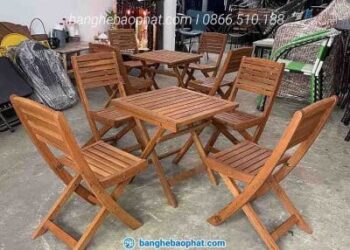Late 2016 update
After a botched recall and some very negative publicity, in September Samsung stopped production of the Galaxy Note 7. The company earlier had asked carriers around the world to suspend sales of the phone. The US Consumer Product Safety Commission has gone further, saying, “Consumers should power down and stop using all Galaxy Note 7s.”
Our advice: Don’t buy a Galaxy Note 7, even if you can still find one. And if you already own one, you should immediately turn it off and exchange it for a phone that isn’t a Note 7. All US cellular carriers and Best Buy (among others) will exchange your Note 7 for phones of equal value on the same network. Similar schemes apply in the UK and Australia.
The Galaxy Note 5, which Samsung still sells, however, remains a great, nonexplosive phone. Though it doesn’t have all of this year’s hardware or software enhancements, it features a great camera, a terrific stylus and extensive battery life. And it is safe to own and use.
In fact, there is no shortage of terrific alternatives. Apple has released its iPhone 7 and 7 Plus, which take great photos, provide long battery life and deliver fast performance, though they lack some of the Galaxy Note 7’s cutting-edge features such as an iris scanner and wireless charging. Google recently released its Pixel phone. And there is Samsung’s own Galaxy S7 Edge, which is the most similar to the Note 7, just without the stylus.
Editors’ note: The original Samsung Galaxy Note 4 review, first published in October 2014 and updated since, follows. The rating, originally 4.5 stars (9/10) has been reduced because of competitive changes in the marketplace.
To stylus or not to stylus, that is the question.
The ‘s S-Pen – the narrow stylus tucked handily inside Samsung’s surprisingly successful, giant 5.7-inch Galaxy Note phone – stands out in a crowd. No other popular phone comes with a stylus, and this one makes the most of its mouselike properties, and an ability to write and draw on the screen. Every day, I’ve used it instinctively to jot a list or note, and to keep the screen clean from finger smudges.
The Note 4’s specs also earn outstanding marks across the board, including its eye-poppingly vibrant display and a mostly-excellent 16-megapixel camera with optical image stabilization. Rapid LTE data speeds and a robust processor join a host of other specs and features that easily make the metal-rimmed, Android-powered Note 4 easily equal to other top-rated handsets – and often better. The phone’s drawbacks, though present, are minor and few.
As someone who enjoys the physical act of writing, I love the Note 4’s stylus skills. However, if the act of putting digital pen to paper baffles you, skip this handset in favor of other big-screen phones that potentially cost less and perform core tasks just as well. This year’s Galaxy Note makes only incremental improvements over last year’s runaway Note 3 , and if you don’t use the S-Pen heavily, the Note “phablet” costs too much compared to competing large-screen phones like the LG G3.
The Note 4 sells for $300 on-contract and $600 off-contract in the US; £600 or £650 in the UK; and AU$940 in Australia. Scroll to the end for price comparisons.
Design and build: Metal over plastic
Achieving the zenith of premium design has long eluded Samsung, whose polycarbonate handsets are usually attractive if not drool-worthy. Earlier this year, Samsung broke the all-plastic mold with its metal-rimmed Galaxy Alpha, a move repeated on the Note 4. Silver accents around the rim and buttons look sharp on both the white and black versions we saw; they should class up the gold and pink tones as well.
So how does it all look? Very good, and a lot better than pretty much every other Samsung phone you can buy, except perhaps for the Alpha. The backing is slightly more textured (and thankfully free of last year’s cheesy, chintzy faux stitching). The straight sides are comfortable to grasp and easy to hold onto. You can easily find physical buttons with your fingertips.
The Note 4’s straight sides make it easy to hold.
James Martin/CNET
Despite the improvements, though, the Note 4 still falls short of the LG G3 and HTC One M8’s luxe metal contouring and finishes, and the Sony Xperia Z3 ‘s modern edges. Metal also structures the iPhone 6 Plus, which maintains a more seamless build quality than the Note 4 (although you can’t remove the iPhone’s backplate.)
After spending several months using the phone, I found that it holds up well to daily wear and tear.
Size and portability
There’s big and then there’s big, and the definition seems to swell by the day. You’ll find the Note 4’s exact dimensions and weight in the chart below, but what I think you really want to know is what it’s like to hold and carry around, especially compared to other supersize phones.
Size-wise, it’s a hair taller and thicker than the Note 3 and almost identical to the iPhone 6 Plus. The LG G3 feels much more compact by comparison, even though its screen size is just 0.2-inch smaller.
Seeing double? The Note 4 (left) and iPhone 6 Plus are closely matched in height and size.
Josh Miller/CNET
As a relatively short person with smaller hands, the Note 4 technically squeezes into my back pocket, though it looks comical sticking out of it. The same scenario goes for its palm-stretching effects: I find one-handed use pretty much pointless and almost impossible, even with Samsung’s software modes turned on. However, several CNET editors with larger mitts and pockets didn’t have much trouble with the Note 4’s size, commenting on how nice it feels to grip.
Size and weight
Ultra HD display
Although it’s got the same 5.7-inch display as last year’s model, the Note 4 has jumped in display resolution, from 1080p HD up to a 2,650 x 1,440p quad HD AMOLED display. Its pixel density of 515 ppi soars over the Note 3’s 386 ppi and the iPhone 6 Plus’ density of 401 ppi (but is less pixel-packed than the slightly smaller LG G3’s at 538 ppi).
These are big, impressive numbers on a big, impressive display that is undoubtedly clear and sharp. I spent a lot of time scrutinizing the Note 4’s presentation of many HD images, Web sites, and even 4K video against the iPhone 6 Plus and LG G3, all of them with brightness cranked to the max. I also threw in the Note 3 for good measure. Apart from predictable differences in color temperature and tone between the LCD iPhone and G3 versus the AMOLED Notes, differences in lettering and image quality were minor, if visible at all.
Display resolutions, compared
I will say, though, that the G3 looks noticeably dimmer at full brightness than the rest, and that the Note 4 exhibited smooth color gradients and strong contrast. It was perhaps just ever so slightly better than the rest, but not nearly enough to warrant a rowdy debate. Even when viewing 4K video, hawk-eyed CNET editors and photographers gathered around the phones could only tell slight differences in the amount of detail on display.
Other external features
If you’re familiar with Samsung’s Galaxy S5 , you pretty much know what you’re getting with the Note 4. A physical home button and two capacitive soft keys rest below the screen, each with a secondary function when you press them down. The power/lock button decorates the right spine, with the volume rocker on the left. A rapid-charging port at the bottom edge balances out the 3.5 millimeter headset jack and IR blaster up top.
Below the camera lens, an LED flash module combines with the heart-rate sensor that is rapidly becoming another Samsung hallmark. The back cover pulls off to access the battery and microSD card slot, which you can fill with an up-to-64GB card (but not the 128GB you see on some other phones). The S-Pen holster bores into the back as well.
There’s a lot of power inside the Note 4, just no waterproofing.
James Martin/CNET
One thing you won’t notice is a rubber gasket surrounding the internal parts to help keep them free of water, unlike on the Galaxy S5. This isn’t a deal-breaker by any means, though some folks find that “waterproof” phones (also like the Xperia Z3) are a little more convenient for their hydrophilic lives.
Music plays nice and loud out of the speakers, though its certainly passable audio quality is a little tinny and thin, not quite the rich, rounded audio of the HTC One M8, for example. Behind the scenes, the Note 4 supports Bluetooth 4.1 and NFC.
OS and apps
Android 4.4 KitKat is practically a given on this phone, as is Samsung’s custom TouchWiz layer. If anything, Samsung seems to have scaled back from the Galaxy S5 rather than piling more on top like it usually does.
My Magazine, the newsfeed that lives to the let of your home screen, has morphed into Flipboard (which powered it anyway). The Toolbox feature that was introduced with the S5 is also gone. I also enjoyed color-coding app folders on the home screen, which is another relatively tiny Note 4 omission. Google Search’s always-listening ear is off by default, but you can turn it on in the app’s settings menu under “Voice.”
Android 4.4.4 is the backbone beneath Samsung’s TouchWiz layer.
James Martin/CNET
Otherwise, you’ll find a slew of ways to customize things from motion control to the notification panel. Blocking mode and private mode are present, and those who find the UI a little too frenetic can switch to a simpler Easy mode. As a security measure, the biometrically-minded can set up the fingerprint scanner as well (though its time-saving property is dubious).
Large phones like this one often come with settings to turn on one-handed operations. New in the Note 4 is a persistent panel hosting icons for your home-button functions, plus one to shrink down the application window for theoretically better one-handed use. You can expand or hide it on any screen, and of course, customize the icons.
Features that would help me use the phone one-handed are some I’d like to like, but in order for it to work, you have to be able to comfortably grip the phone and navigate with a thumb, something I had problems with while grabbing a pole on the bus and giving blood, both activities that really test these claims by taking an arm out of commission. Also, though it’s meant to be temporary, shrinking the app window defeats the purpose of having such a large display in the first place.
Shrinking the screen is one way to use the Note 4 when you’ve only got one free hand.
Josh Miller/CNET
Just two more notes on apps before we move on. You may notice a few tiny changes to S Health. In the US at least, S Health gets a new optional “coach” you can use that’s sourced by healthcare provider Cigna. In addition to checking your heart-rate, the app can also monitor your blood-oxygen level (SpO2).
You might also notice fewer bundled Samsung apps in general, like the Kid’s Mode that came pre-installed in the S5. These haven’t disappeared, they’re just packaged into Galaxy Apps and include partner apps (many that comes with deals) like Dropbox and Kindle for Samsung. Any other bloatware you find on your phone is most likely courtesy of your carrier.
Multitasking and more
The Note 4 still supports a split-screen mode that lets you resize two app windows from a list of supported programs. You can now launch it several ways, including from the Recents tab, and can also create smaller pop-up windows to drag around the screen.
Even more, you can shrink the size of a popup to float it around the screen as a persistent bubble – a lot like a chathead in the Facebook Messenger lexicon, or like the Toolbox bubble found in the Galaxy S5.
(Watch the video below for examples.)
This year’s Note adds the ability to select text (as in a website) and multiple Gallery images by clicking the S-Pen button and dragging. Further, you can pull these items from select apps to others when in multi-window or popup mode. I was able to drag images from the gallery to the Messaging app, for instance, but not into Facebook or Gmail, two places where the shortcut would make a huge difference.
One 2014 addition I did glom onto is the sticky Post-It style of the Note 4’s Action Memo. Now, after writing a note, you can also pin it to the home screen as a visual reminder. Here’s another beneficial change: being able to share and annotate photos after hovering over them in the gallery.
As with all the phone’s multitasking efforts, I’m not sold on the overall efficacy of all these time-saving conveniences; I’m not convinced they all work.
Writing with the new S-Pen
It may look like a little plastic toy, but the roughly 4-inch plastic S-Pen stylus is the crux of what makes the Note series what it is. The Note 4’s square-sided S-Pen is almost the exact same design and dimension as the Note 3’s, only a touch shorter.
What’s different is the tech within the wand, which makes the Note 4’s S-Pen a smoother, more responsive writer than last year’s model. To test it, I wrote the same sentence several times with both S-Pens, first on the Note 3 and then on the Note 4. Text handwritten with the Note 4’s S-Pen consistently came out heavier and darker than with the Note 3’s pen, even at different ink thicknesses. This is because the new S-Pen has more than 2,000 levels of sensitivity versus 1,000 levels on last year’s model.
(Watch the video below for examples.)
As before, you can select from a number of writing implements and colors, building your favorite combinations into presets to use on different backgrounds and templates. A calligraphy tip is the newest addition to the bunch, imparting dramatic edges and smoothing out my otherwise inelegant penmanship into something readable and semi-stylized.
The S-Pen is great for navigation when you use it more like an extension of your finger and mouse – and that also helps keep the screen clean from grime. I find it easier to use when I’m stationary rather than mobile.
Cameras and video
Bottom line: the Note 4’s 16-megapixel takes some great photos. You probably won’t actively notice its best new feature, optical image stabilization. Instead, you’ll notice that flowers swaying gently in the breeze look well-defined despite the motion, and that your jittery espresso hands might not muck up as many shots. Colors can be a little oversaturated, but the end result is a collection of images, especially taken outdoors, that I’d want to share and possibly print.
You’ll snap photos to your heart’s delight on the 16-megapixel shooter.
Sarah Tew/CNET
As I said, that assessment applies most to photos taken with ample natural light. Like a lot of other phone cameras, the Note 4’s indoor and low light shots often processed with less detail and sometimes with a quality I can only describe as a mask over the scene – and this is after taking the time to set up a photo on a stationary object. Low-light shots also tend to kick in Samsung’s automatic night mode, which often asks you to hold still for several seconds while it processes the image. Most rival phones aren’t that demanding.
The front-facing 3.7-megapixel took nice self-portraits, though beware of the automatic Beauty Face mode that artificially sheds years from your age. You can dial that up or down depending on your tastes. A new wide-angle selfie mode takes a three-part panorama, though it takes a lot more time and effort to get right than is worth it. Better is the rear-cam selfie mode you launch from the main camera. A series of beeps (or vibrations) tell you you’re on track, and then automatically takes the photo. The image quality is infinitely better and the scene much more natural.
(Watch the video below for examples.)
Samsung has really pulled back on default camera modes. The HDR toggle remains on the screen, while selective focus and panorama are still tucked into Modes by default. You can click Manage Modes to surface more, like dual camera and action shot modes, and you’ll also be able to download more from the camera app.
Video capture is excellent and is one area where optical image stabilization makes a difference. Videos capture in 1080p HD by default (with a 16:9 aspect ratio), but can go up to Ultra HD 3,840 x 2,160-pixel resolution for 4K video. These will be gargantuan files. If you’re into saving space or need to shoot in lower-resolution, 720p HD and VGA are other options.
Both the camera and video recorder let you adjust exposure values and metering, ISO and white balance, and both HDR and grid lines. Slow motion and fast motion return as tools for more adventurous producers.
Stick around for a more detailed camera-versus-camera shootout. In the meantime, enjoy these photos below. Click to enlarge to full resolution.
There’s a lot of rich detail and color in the flower bud at right, and I got the depth effect I wanted.
Jessica Dolcourt/CNET
I feel the same way about the leaf detail here, but would like a little more defintion on the petals.
Jessica Dolcourt/CNET
Colors are as rich and full here as they are in real life, but not oversaturated.
Jessica Dolcourt/CNET
Keeping the phone steady and focusing up close still didn’t get the garnish in focus.
Jessica Dolcourt/CNET
Night mode kicks in in low light, which means you had better hold still while it processes.
Jessica Dolcourt/CNET
Performance: Data, processor, battery life
Performance is nothing short of impressive for any category, and that’s when looking at diagnostic test scores as well as real-world usage. LTE-A Category 6 means you can theoretically get speeds as high as 300Mbps down and 50Mbps up. In San Francisco, the Note 4 consistently yielded double-digit downlink speeds in the 20s and 30s; 16Mbps was the low and 50 the high. Uplink speeds ranged from 11 to 15Mbps, with one outlier at 0.92.
In real-world tests, uploads and downloads were equally zippy. Music and YouTube videos also streamed reliably, even when demanding higher-load HD content. Consult the chart below for a few more details.
3D Mark Ice Storm – Unlimited
On the processing side of things, you’ll either get a 2.7GHz Qualcomm Snapdragon 805 chipset (with an Adreno 420 GPU) like I did, or a 1.9GHz octa-core Exynos 5433. I had no complaints with the speeds at which tasks complete, like loading up S Notes, for example. you’ll get 3GB of RAM.
A phone like this was made for taking photos and viewing the screen at length, which is why its 32GB of internal storage is crucial. If you need more, you can buy a microSD card that holds up to 64GB more.
Geekbench 3
Those of you fretting over battery life should be eased by the way the phone seems to sip power from its 3,220mAh juice pack. Rated for up to 20 hours talk time, I was able to go a full day on a single charge with more to spare, and that’s doing normal tasks like streaming music, using Wi-Fi, and taking photos.
Even when you do tax the battery with resource-draining activities like navigating long trips, the fast-acting charger that comes in the box hops to it, charging up to 50 percent of the battery’s capacity in half an hour. Note, of course, that battery efficiency tends to flag over time on any phone, and that out-of-the-box tests will outshine those down the road. We’ll update this section with results from our in-house battery run testing.
Call quality
Call quality was pretty good when I tested the Note 4 in San Francisco using AT&T’s network. I found volume nice and loud at medium and medium-high levels, without any background noise. I did notice, though, that my caller’s voice, while natural, sounded a little off, with a little artificially breathy quality.
On his side, my testing partner noted that I sounded a little tinny and scratchy, though volume was fine. I also sounded slightly flat to his ears.
Speakerphone was good on both sides. My calling partner noted that I sounded almost the same through the speaker as I did through the standard ear pierce. He only heard a slight echo. On my side, volume was surprisingly loud and clear, though he sound a bit muffled.
Buy it or skip it?
If you intend to use the Note 4’s stylus daily, the phone will serve you well in every capacity and is worth the price.
Comparison pricing
Its specs and design undeniably put the Note 4 near the top of the food chain, though some rival phones have sexier builds and competitive performance, and often take cleaner, more reliable low-light and indoor shots. While the hardware is a step up from the Note 3, changes aren’t dramatic enough to warrant an immediate upgrade.
If you want to see how the Note 4’s size, design camera and more stack up to its predecessor and Apple’s phablet-sized iPhone 6 Plus, check out CNET’s initial comparison and final impressions.
Buy the if you: -Intend to write notes or draw often -Like the idea of navigating without using your fingers -Crave a large-screen phone -Seek a top-tier Android device -Have a flexible budget
Skip the if you: -Don’t plan to use the stylus -Prioritize an all-metal smartphone -Don’t require an extra-large screen -Have a more limited budget -Already own a Samsung Galaxy Note 3






